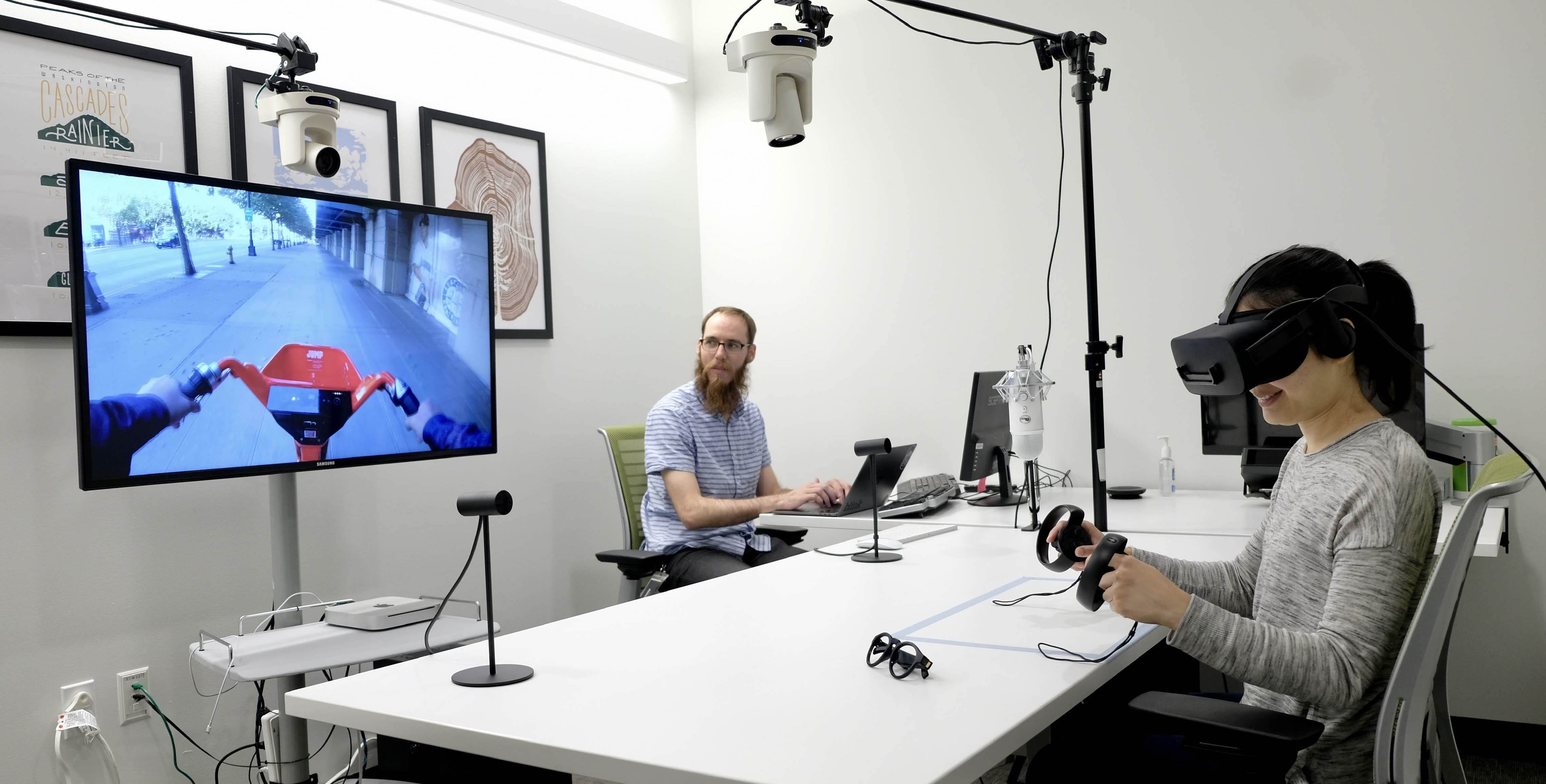
By
John Dirks
Blink has a long history of partnering with hardware design and development teams. In the early 2000s, we conducted usability lab and field research studies for Microsoft Hardware. Over the two decades since then, we have worked on mobile phones, wearable cameras, home networking equipment, IoT devices, smart speakers, auto infotainment systems, gaming consoles and accessories, AR/VR headsets, voice-activated kitchen and bath fixtures, medical devices, and many other hardware products for a variety of clients. Most hardware products we work on have physical and digital components.
We believe products should be tested early and often. Therefore, hardware UX researchers should be engaged even before hardware builds are available. Involving research early in the development process provides product development teams with essential insights about users, unmet needs, and use context. Here are some of the reasons why hardware UX research is essential.
1. Hardware design decisions are (almost) forever
Hardware design is not for the faint of heart. Early and unvalidated design decisions come back to haunt you if they result in a poor or compromised user experience.
Unlike software, which can be updated and pushed out directly to users' devices even after the initial launch, it's expensive and challenging to change hardware design once manufacturers are tooled and production is underway.
Typically, only the most severe usability or design flaws are addressed between releases. Testing your hardware early with potential users helps align design decisions with customer needs, reducing the likelihood of negative reviews after release and increasing the possibility of product-market fit. Plus, usability testing ensures every component in your design works together, which is critical to a successful hardware design.
2. Early exploration and concept testing helps optimize form factor
Conducting user research early will help you understand customer preferences and identify new use cases. Insights about shape and size, control and input placement, and fundamental interactions may influence hardware form factors. Researchers can explore different use scenarios with research participants as they interact with hardware models, allowing them to rank-order model preferences and offer important feedback. We often learn about new use cases that hardware designers have not considered previously.
We once conducted a benchmark usability study of an industrial thermal imaging device used by HVAC maintenance personnel. Early research uncovered a critical use case and OSHA requirement. We learned that thermal imagers targeting this industrial user base should have hardware buttons optimized for single-handed use because HVAC personnel often needed to use them on a ladder.
3. Your hardware must work well within an ecosystem
A decade ago, Xbox engaged Blink to embark on an extensive in-home research program. We primarily tested new gaming consoles and prototypes of the Kinect motion-gaming device. However, we also collected detailed data on each user's home entertainment ecosystem and configuration — TVs, stereo and speaker components, DVD players, competing gaming consoles, furniture placement, and more — to understand the role that Xbox played or could play in that ecosystem. In addition to influencing other product and digital setup decisions, this research helped Xbox optimize the length of the cables included in the box.
Today's smart home ecosystem is like yesterday's entertainment ecosystem. IoT has increased over the past few years. People's homes are now filled with devices. Smart speakers, thermostats, door locks, security cameras, and appliances are increasingly part of a larger smart home ecosystem. Hardware design decisions may be influenced by factors such as how users will connect devices, how devices are powered, and how they operate cohesively via hubs, ports, and apps.
4. Hardware UX testing can prevent your out-of-box experience from going off the rails
Delivering a seamless out-of-box setup experience requires deliberate and intense effort. This is where hardware design, packaging, quick start guides, detailed instructions, part order within the box, and any digital setup meet, creating a make-or-break moment in the user experience.
"Unboxings," for example, is a popular YouTube genre where users record themselves opening a new item. Of course, the out-of-box experience (OOBE) has always been necessary, but it matters more than ever as influential armchair reviewers recap their experiences online.
Testing the OOBE can be humbling, as refinement is almost always necessary. However, through usability lab studies and early in-home trials, we have helped companies optimize the out-of-box experience for a wide variety of devices, including smart showers and fixtures, robot vacuums, AR/VR headsets, and connected exercise equipment.
5. Foundational research will help you understand how interaction modes converge
We focus our UX practice on products that combine digital and physical components. With nearly 20 years of experience studying digital, physical, voice, motion, and VR interactions, we have learned how valuable foundational research is when making design decisions. Insights about users, tasks, and contexts of use empower product development teams with the information they need to build a successful product.
As I write this, I'm listening to music on a Bluetooth speaker that I can control through different means: by voice through my phone, by touch on my watch, on my Mac through keyboard and mouse inputs with the Spotify app, and by touching the speaker itself.
I have the speaker turned away so that I am not distracted by a light that runs in sync with the music. The colored light show is both a delighter and a major annoyance, depending on when and where I use this speaker. I have not yet downloaded the app I need to turn this feature on and off — and I am unlikely to go through the trouble of doing so. An astute UX researcher observing participants using this device in various ways would derive important insights about potential Bluetooth speaker hardware features that product designers could use to create a superior version.
6. Children are harsh critics, and particular audiences provide unique learning opportunities
A typical range of ages in user research studies is 18-55, and research subjects often skew male and Caucasian. Blink conducts hardware research with children, seniors, and men and women with diverse racial and ethnic backgrounds to balance out our participants or to design for special audience needs. When our research includes children (and usually their parents), we focus on interacting with kids in different age ranges and stages of development. If the hardware or surface treatments are not age-appropriate, six-year-olds might love the same designs that 12-year-olds reject.
This practice extends to packaging and labeling. For example, hardware designed with seniors in mind must also be age-appropriate and consider larger or higher-contrast buttons, digital displays, and instructional text. In addition, wearable devices such as VR goggles must offer adjustments for facial and even clothing differences based on ethnicity and gender. For example, in one recent study, a wearable battery pack that fits fine for both men and women wearing jeans fell far short when research participants wore skirts and dresses.
In addition to your primary audience, getting input from as many stakeholders as possible is important. Having multiple perspectives — from prospective users and stakeholders — can help you understand how well your product will meet the original intent of the design. Your stakeholder roster may include the following:
- Engineers
- Industrial designers
- Packaging designers
- Marketing team members
- Product managers

7. Great design fosters brand loyalty
A well-designed product is key to creating a loyal customer base, and usability testing are critical in the design process. Usability testing reveals how your users engage with your product, in reality, providing valuable insight into how they perceive your brand. For instance, if users have difficulty figuring out how to use your product's basic features, they will likely have a more negative view of your brand. Adapting your design to be more intuitive is one solution for improving brand perception.
Questions focusing on brand loyalty during user interviews, such as "How likely are you to recommend this product to a friend or colleague?" can help you gauge the product's potential for creating brand loyalty among your customers.
Of course, it's important to remember that the full brand experience includes more touchpoints than you can measure in hardware UX testing alone. The brand experience consists of the customer experience (CX), such as a smooth purchasing experience and excellent customer service options.
8. Better technical support increases user satisfaction
Technical support is always a considerable expense. Returns of physical products can also severely burden a company. Doing research can help you prevent support calls in the first place. Good design, clear instructions, and an intuitive experience can increase user satisfaction.
Despite your best efforts, some aspects of your product may confuse some people. Evaluative research in the later stages of product development can help you anticipate where the experience falls short so that you can mitigate the impact.
For example, when we collaborated with Microsoft on an Xbox Kinect research project, our field findings helped to optimize the out-of-box experience. In addition, they gave Xbox support a heads-up about the types of problems users might experience. As a result, the support team created a website that answered frequently asked questions based on our research findings. This proactive approach helped significantly decrease call volume.
9. Better design equals better function
Usability testing helps you understand what elements your users expect from your product. Small details such as color scheme, surface texture, and intuitive controls can make a great experience.
It can also help to consider how the product fits into the user's lifestyle. Conducting hardware UX research in real-life settings can provide the final pieces to your design puzzle.
Start your hardware UX research with Blink
A lot of work goes into designing new hardware and the software experiences that power them. Hardware UX research uncovers design flaws before they become a hindrance in marketing. Products should be tested rigorously early and often — in the best-case scenario before hardware builds are even available. Even if you're down the path, it's never too late to invite insights into the process of designing the experience users will have with your product.
If you'd like to conduct UX research on your product — no matter where it is in the development process — working with Blink can get you on the right path.
Contact us today to learn how our evidence-driven approach to research and design can help you launch successful products.



